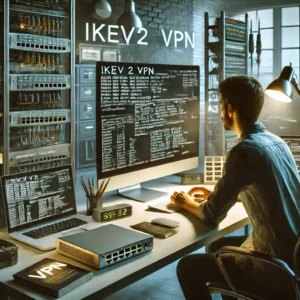High-Speed External Hard Drives for Creative Professionals: Enhance Your Workflow & Storage
In the fast-paced world of creative industries, professionals need reliable tools that allow them to create and store their work efficiently. Whether you’re a photographer, videographer, graphic designer, or digital artist, the need for high-speed external storage is undeniable. With the vast amounts of data produced, having a high-speed external hard drive can make a significant difference in terms of workflow, backup, and portability. In this article, we’ll dive into the importance of high-speed external hard drives for creative professionals and explore what to look for when choosing the best one for your needs.
Why High-Speed External Hard Drives Matter
Creative professionals often work with large files, such as 4K videos, raw images, audio files, or detailed design work. These files can be several gigabytes in size, and if your external storage isn’t fast enough, it could lead to delays, slow transfer speeds, and even data loss. High-speed external hard drives are designed to transfer large files quickly, allowing you to maintain productivity without interruptions.
Key Benefits of High-Speed External Hard Drives for Creative Professionals
1. Improved Workflow and Efficiency
When working on creative projects, time is money. If your external hard drive takes too long to load or transfer files, it can slow down your entire process. A high-speed drive ensures that you can move between tasks seamlessly. Whether you’re importing footage, backing up projects, or rendering images, high-speed drives drastically reduce the time spent waiting for data transfers.
2. Fast File Transfers
When dealing with high-resolution images, 4K or 8K video files, or extensive audio tracks, you need a drive that can handle large amounts of data at once. A high-speed external hard drive enables fast file transfers, making it easier to work with these large files. Time-consuming tasks like exporting, rendering, or archiving become more efficient, allowing you to stay ahead of deadlines.
3. Enhanced Reliability
Creative professionals rely on their external hard drives not only for storing files but also for creating backups. A high-speed drive that performs well over time is critical for ensuring that your work is secure and accessible. These drives are built with durability in mind, offering better performance and less risk of failure compared to traditional, slower drives.
4. Portability for On-the-Go Work
Many creative professionals work in multiple environments – on set, in the studio, or at a client’s office. High-speed external drives are compact, portable, and lightweight, making them easy to carry wherever you go. This is especially important for photographers or videographers who need to store footage quickly during shoots or transfer it between different locations.
What to Look for in a High-Speed External Hard Drive
Choosing the right external hard drive is crucial for creative professionals. While many factors contribute to performance, here are the key things to consider:
1. Drive Type: SSD vs. HDD
There are two main types of external hard drives: solid-state drives (SSDs) and hard disk drives (HDDs). Here’s a breakdown of both:
- SSD (Solid-State Drive): SSDs are the preferred option for most creative professionals because of their faster read/write speeds, durability, and compact size. They have no moving parts, which makes them less susceptible to damage and ideal for mobile use. If speed is your primary concern, an SSD is the best choice.
- HDD (Hard Disk Drive): While slower than SSDs, HDDs tend to offer more storage space at a lower price point. If you need a large amount of storage for archiving or long-term backups, an HDD might be the right choice. However, the slower read/write speeds could become a bottleneck during intensive tasks.
2. Storage Capacity
The amount of storage you need depends on your specific profession. Video editors, photographers, and 3D artists often work with very large files, so you’ll need a drive that can accommodate these demands. External drives typically offer storage ranging from 500GB to 4TB and beyond. However, always plan for future storage needs by opting for a drive with more capacity than you currently require.
3. Connection Type: USB 3.0, Thunderbolt, or USB-C
The connection type plays a vital role in the performance of an external hard drive. Here’s a quick rundown of the options:
- USB 3.0: One of the most common connections, USB 3.0 provides transfer speeds up to 5Gbps. It’s widely compatible and works well for general use.
- USB-C: USB-C is the newer standard, offering faster speeds (up to 10Gbps) and improved power delivery. It’s becoming the preferred option for modern laptops and devices.
- Thunderbolt: Thunderbolt is the fastest connection option, with speeds up to 40Gbps. If you need the highest performance for tasks like 4K video editing, a Thunderbolt drive is ideal. However, Thunderbolt-compatible drives are often more expensive.
4. Durability and Build Quality
Since external hard drives are portable, they need to be built to withstand the rigors of daily use. Look for drives with rugged designs or ones that are shock-resistant. For example, if you’re a photographer or videographer working in challenging environments, a waterproof and drop-resistant drive can save your files from accidents.
5. Compatibility with Software and Operating Systems
Ensure that the drive you choose is compatible with your operating system and the software you use. Most external hard drives are compatible with both Mac and Windows, but some may come pre-formatted for one system. You may need to reformat the drive for cross-platform compatibility.
Top High-Speed External Hard Drives for Creative Professionals
Here are some of the top external hard drives that meet the needs of creative professionals:
1. Samsung T7 Portable SSD
The Samsung T7 is a sleek and fast external SSD with read speeds up to 1050 MB/s. It’s ideal for professionals who need to transfer large files quickly and reliably. The drive is compact, shock-resistant, and available in capacities up to 2TB, making it a versatile choice for creatives on the go.
2. SanDisk Extreme Portable SSD
This drive offers speeds up to 1050 MB/s and comes in a rugged design, making it perfect for outdoor shoots or travel. It’s available in various sizes, with the option of up to 2TB of storage. Its IP55 rating makes it water and dust-resistant, ensuring the safety of your files even in harsh environments.
3. LaCie Rugged USB-C
LaCie’s Rugged drives are known for their durability, and the USB-C version is no exception. With a 5TB storage capacity and 130 MB/s speeds, it offers a balance between speed and storage. Its shock-resistant, water-resistant, and drop-resistant features make it the go-to choice for photographers and videographers working in tough conditions.
4. G-Technology G-Drive Mobile SSD
This drive offers blazing fast speeds of up to 560 MB/s with a compact design, making it perfect for creative professionals. It’s available in storage capacities up to 2TB, and its rugged build ensures protection during transport.
For creative professionals, having a high-speed external hard drive is more than just a luxury; it’s a necessity. It ensures that your workflow stays efficient, your files are secure, and you have the flexibility to work on the go. With options ranging from SSDs to rugged drives with USB-C or Thunderbolt connections, there’s a solution for every creative’s storage needs. Whether you’re editing video, designing graphics, or handling large audio files, investing in a high-speed external hard drive will make your work smoother, faster, and more reliable.
FAQs About High-Speed External Hard Drives for Creative Professionals
1. What is the difference between an SSD and an HDD?
An SSD (Solid-State Drive) is faster, more durable, and quieter than an HDD (Hard Disk Drive), which uses mechanical components. SSDs are generally preferred for creative professionals due to their speed.
2. How fast should an external hard drive be for video editing?
For video editing, especially 4K or higher resolution footage, look for a drive with read/write speeds of at least 500 MB/s, with SSDs offering the best performance.
3. Are portable external hard drives secure for storing sensitive data?
Yes, many portable drives come with encryption options that ensure your sensitive data is protected. It’s also a good idea to regularly back up your files to prevent data loss.
4. Can I use a high-speed external hard drive for gaming?
Yes, high-speed external hard drives, especially SSDs, can improve loading times and overall game performance when used for gaming.
5. How long do external hard drives typically last?
The lifespan of an external hard drive depends on its type and usage. SSDs generally last longer than HDDs, but both can last several years if well-maintained.













Post Comment